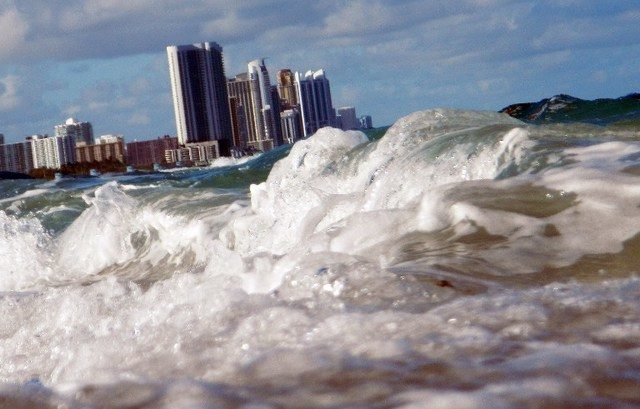SUMMARY
This is AI generated summarization, which may have errors. For context, always refer to the full article.

MIAMI, USA – Sea level rise is accelerating and could reach 26 inches (66 centimeters) by century’s end, in line with United Nations estimates and enough to cause significant problems for coastal cities, a study said Monday, February 12.
The past annual rate of sea level rise – about 3 millimeters (0.1 inches) per year – may more than triple to 10 millimeters per year by 2100, said the report in the Proceedings of the National Academy of Sciences (PNAS), a peer-reviewed US journal.
The findings are “roughly in agreement with the Intergovernmental Panel on Climate Change (IPCC) 5th Assessment Report (AR5) model projections,” said the report, based on 25 years of satellite data.
“This acceleration, driven mainly by accelerated melting in Greenland and Antarctica, has the potential to double the total sea level rise by 2100 as compared to projections that assume a constant rate – to more than 60 centimeters instead of about 30,” said study author Steve Nerem.
“And this is almost certainly a conservative estimate,” added Nerem, a professor of aerospace engineering sciences at the University of Colorado Boulder.
Co-authors on the study came from the University of South Florida, NASA Goddard Space Flight Center, Old Dominion University and the National Center for Atmospheric Research.
Climate change leads to rising seas in two ways.
For one, higher concentrations of greenhouse gases in the atmosphere boost the temperature of water and warm water expands.
This so-called “thermal expansion” of the oceans has already contributed about half of the seven centimeters of average global sea level rise in the past quarter century, Nerem said.
Oceans also rise with the increasing flow of water due to rapidly melting ice at the poles.
“This study highlights the important role that can be played by satellite records in validating climate model projections,” said co-author John Fasullo, a climate scientist at the National Center for Atmospheric Research. – Rappler.com
Add a comment
How does this make you feel?
There are no comments yet. Add your comment to start the conversation.